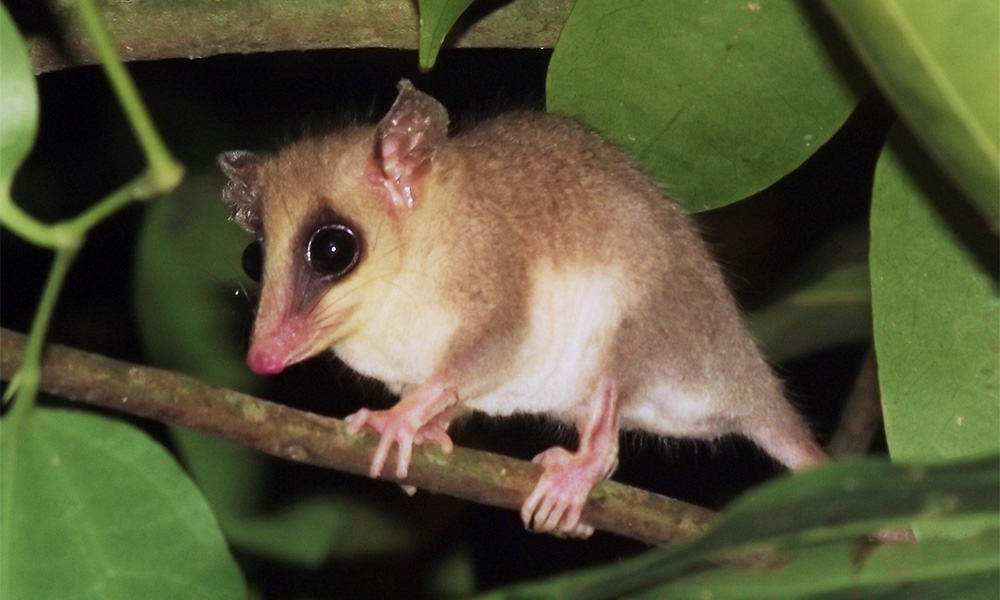Is it a mouse? Is it a opossum? It’s a Mexican mouse opossum! The Mexican mouse opossum (Marmosa mexicana) has a handful of Spanish names in Costa Rica including zorro ratón, zorricí, and zorillo. No matter which language you speak, there’s one thing that we all can agree to call them and that’s adorable.
Mexican mouse opossums are tiny. They come in at about 6 inches long and weigh around 3 ounces. Males tend to be a little larger than females. To picture a Mexican mouse opossum, think of a reddish-brown mouse, with a black eye mask, and a long prehensile tail. The only thing to me that stands out as being opossum-like is the shape of the head. They have the same shape head as the common gray four-eyed opossum, only much tinier. If I showed you a camera trap video of one and you said, ‘What kind of mouse is that?’, I wouldn’t tease you. They look very rodent-like.
Mexican mouse opossums have a long prehensile tail because they are mostly arboreal. They do most of their living and hunting amongst the branches of the trees. They have a diet that consists mainly of fruits and insects, though they’re also known to occasionally eat lizards, birds, mice, and bird eggs, with scientists specifically listing house wrens, parrots, and woodpeckers as victims of nest raiding.
They are nocturnal, doing the majority of their tree climbing and hunting during the night. During the day they nest in abandoned bird nests, nests they make themselves out of leaves, or less commonly, in burrows in the ground.
As with all creatures in the food web of Costa Rica’s wild places, Mexican mouse opossums are a food source to other species. Their bones have been found in the regurgitated pellets of several species of owls. A scientist working in Costa Rica in 1891 found a Mexican mouse opossum in the stomach of a rattlesnake.
Being so small, I’d imagine that the list of predators is quite long. That being said, it has been noted by scientists who study these tiny creatures that they act aggressively while being trapped for examination, so they don’t go down without a fight.
Mexican mouse opossums lack a very opossum-like attribute. They don’t have pouches. After a short gestation period, a litter of 1 to 14 larvae are born. They hang on to the female and feed for about a month at which point they stay in a nest and continue to nurse for a second month.
After a month and half they will start to accompany the female on excursions out of the nest. After five or six months, they’re able to reproduce. They do a lot of growing up very quickly because it’s thought that few are able to survive past two years.
I have never seen a Mexican mouse opossum in the wild, but I have recorded them several times on my camera traps. Most of the videos come from cameras placed in trees, but I have recorded them a few times on the forest floor.
Mexican mouse opossum videos are usually quite short, featuring some quick mouse-like movements before disappearing. Take a look at a few clips of this adorable tiny opossum in the video below.
About the Author
Vincent Losasso, founder of Guanacaste Wildlife Monitoring, is a biologist who works with camera traps throughout Costa Rica. Learn more about his projects on facebook or instagram. You can also email him at: vincent@guanacastewildlifemonitoring.com






